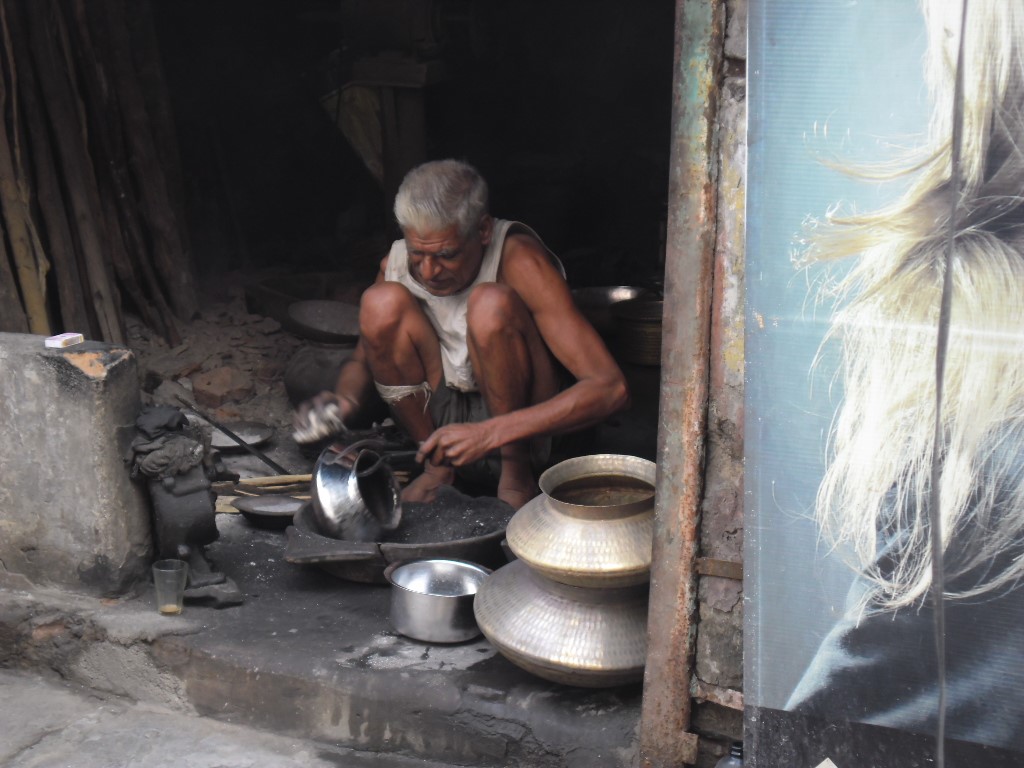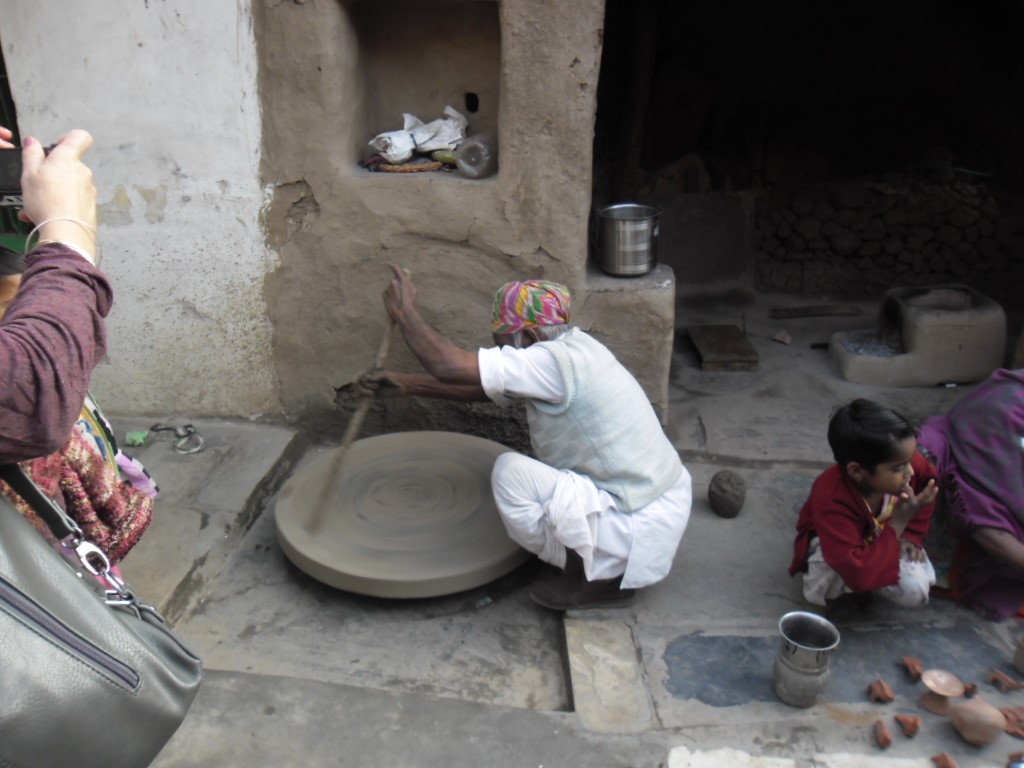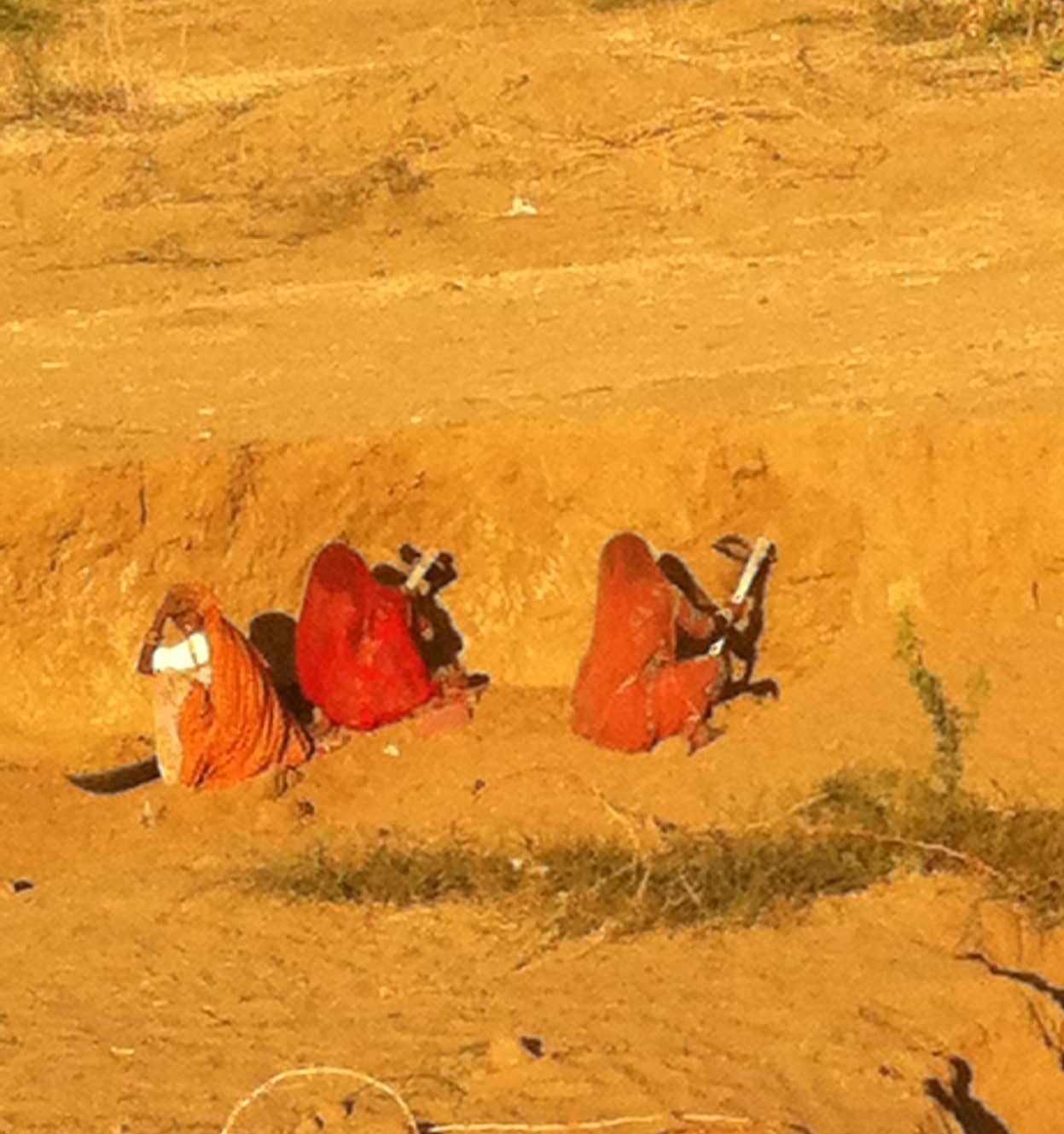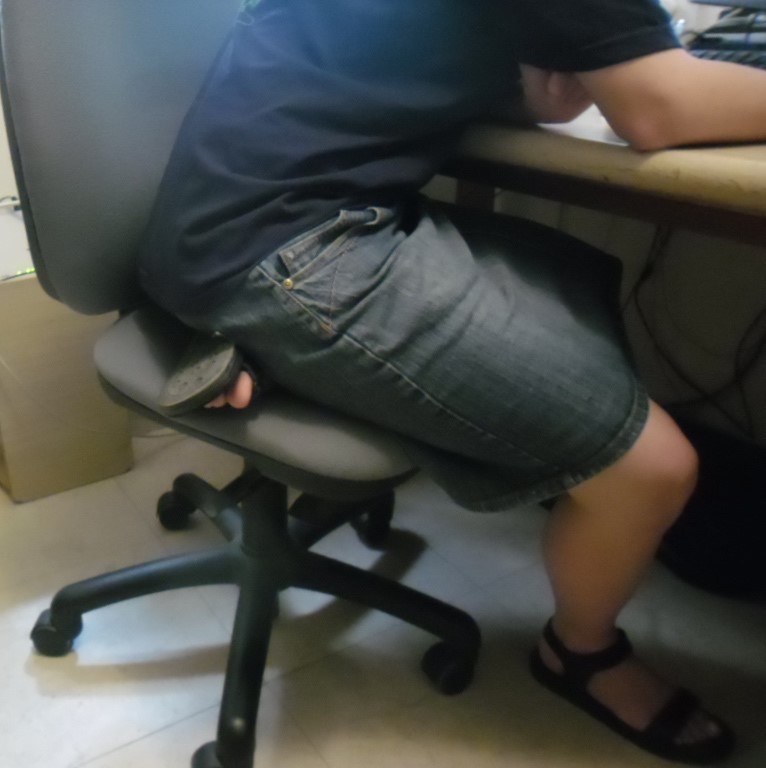EFFICIENT AND ERGONOMICALLY CORRECT
 Traveling provides a wonderful opportunity to observe the way different cultures solve the challenges of workstation design and postures. In India many people sit on the ground cross-legged. Sitting cross-legged develops openness at the hip and affords great stability. The flower stringers have set up their workstation perfectly to meet their needs. Their supplies are close at hand which is important because leaning forward from this position puts extra strain on the hip joint. And there is no need to worry about delivery systems. The workstations are set up just outside the temple where their customers worship.
Traveling provides a wonderful opportunity to observe the way different cultures solve the challenges of workstation design and postures. In India many people sit on the ground cross-legged. Sitting cross-legged develops openness at the hip and affords great stability. The flower stringers have set up their workstation perfectly to meet their needs. Their supplies are close at hand which is important because leaning forward from this position puts extra strain on the hip joint. And there is no need to worry about delivery systems. The workstations are set up just outside the temple where their customers worship.
RELIGIOUSLY ENDORSED CORRECT SITTING
 Sitting cross-legged , like all sitting positions, is culturally dictated. The carvings inside Indian temples imply that there is a higher spiritual value to sitting in the lotus position.
Sitting cross-legged , like all sitting positions, is culturally dictated. The carvings inside Indian temples imply that there is a higher spiritual value to sitting in the lotus position.
SQUATTING IS GOOD FOR YOUR BACK
 Squatting is a work position common in other cultures but not in ours. If the ligaments of the legs permit it, squatting saves a lot of wear and tear on the weaker muscles of the back . It’s also a way of approaching the work space without bending forward at the spine. Notice how the metal worker’s center of gravity is over his heels.
Squatting is a work position common in other cultures but not in ours. If the ligaments of the legs permit it, squatting saves a lot of wear and tear on the weaker muscles of the back . It’s also a way of approaching the work space without bending forward at the spine. Notice how the metal worker’s center of gravity is over his heels.
THE NEED TO BALANCE PREVENTS BENDING FORWARD AT THE WAIST
This man is using a stick to spin his potters’ wheel from a squatting position. Notice the more or less straight line of his spine. The effort of his upper body is right over his center of gravity.
EASTERN VERSUS WESTERN APPROACH TO SITTING TASKS
Look at the contrast in the Eastern and Western approach to sitting tasks. The women at the left confine their movements to an accessible area, preventing too much bending, leaning, reaching and twisting. They are firmly rooted to the ground, working with their upper bodies over their center of gravity.
In our culture, many young women sit with one leg folded underneath them on an unstable wheeled base. This type of sitting is usually accompanied by reaching forward to access our devices, stressing the muscles of the spine. There is no rootedness, no stability, no solid contact with the ground, no center of gravity, no balance and no protection for the musculoskeletal system. The primary work area should be easily accessible. Increased awareness of our sitting postures is an important early step to improving our wellbeing and preventing pain and injury.






 I have been helping people to sit and move comfortably since 1998. I am always looking for ways to help people improve their relationships with their bodies.
I have been helping people to sit and move comfortably since 1998. I am always looking for ways to help people improve their relationships with their bodies.